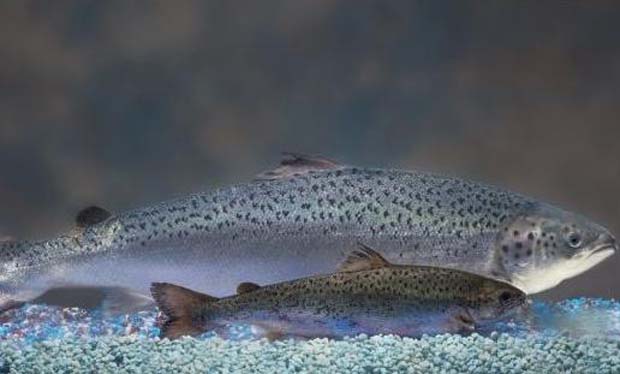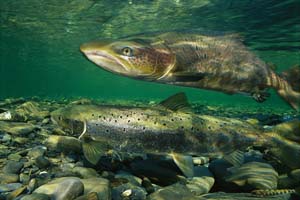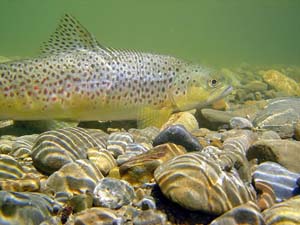Hybridization between genetically modified Atlantic salmon and wild brown trout reveals novel ecological interactions
By Krista B. Oke, Peter A. H. Westley, Darek T. R. Moreau and Ian A. Fleming
[dropcap]I[/dropcap]nterspecific hybridization is a route for transgenes from genetically modified (GM) animals to invade wild populations, yet the ecological effects and potential risks that may emerge from such hybridization are unknown. Through experimental crosses, we demonstrate transmission of a growth hormone transgene via hybridization between a candidate for commercial aquaculture production, GM Atlantic salmon (Salmo salar) and closely related wild brown trout (Salmo trutta). Transgenic hybrids were viable and grew more rapidly than transgenic salmon and other non-transgenic crosses in hatchery-like conditions. In stream mesocosms designed to more closely emulate natural conditions, transgenic hybrids appeared to express competitive dominance and suppressed the growth of transgenic and non-transgenic (wild-type) salmon by 82 and 54 per cent, respectively. To the best of our knowledge, this is the first demonstration of environmental impacts of hybridization between a GM animal and a closely related species.
These results provide empirical evidence of the first steps towards introgression of foreign transgenes into the genomes of new species and contribute to the growing evidence that transgenic animals have complex and context-specific interactions with wild populations. We suggest that interspecific hybridization be explicitly considered when assessing the environmental consequences should transgenic animals escape to nature.
To read more click here […]




